
Overview
This article articulates the significant benefits of subscription-based ecommerce for direct-to-consumer (DTC) brands. Notably, it emphasizes predictable revenue, increased customer loyalty, and enhanced marketing efficiency as key advantages. Supported by compelling data, the discussion reveals substantial revenue growth, improved customer engagement, and effective inventory management. These insights demonstrate how subscription models can foster long-term financial stability and contribute to successful brand strategies.
Introduction
The emergence of subscription-based ecommerce has revolutionized the landscape for direct-to-consumer (DTC) brands, presenting a wealth of benefits that extend far beyond simple sales. By adopting this model, companies can unlock:
- Consistent revenue streams
- Enhanced inventory management
- Significantly lower customer acquisition costs
All while cultivating stronger customer relationships. However, as the market grows increasingly saturated, the challenge lies in effectively leveraging these advantages to sustain a competitive edge. What strategies can DTC brands implement to not only flourish in this dynamic environment but also secure long-term growth and foster customer loyalty?
Parah Group: Boost Profitability with Conversion Rate Optimization
Parah Group stands at the forefront of Conversion Rate Optimization (CRO), a critical component for DTC companies aiming to boost profitability. By leveraging data-driven strategies alongside principles of consumer psychology, Parah Group empowers businesses to enhance their conversion rates. This results in increased sales without the need for additional advertising expenditures. Understanding is vital for companies contemplating subscription based ecommerce, as it ensures that each customer interaction is meticulously optimized for maximum revenue potential.
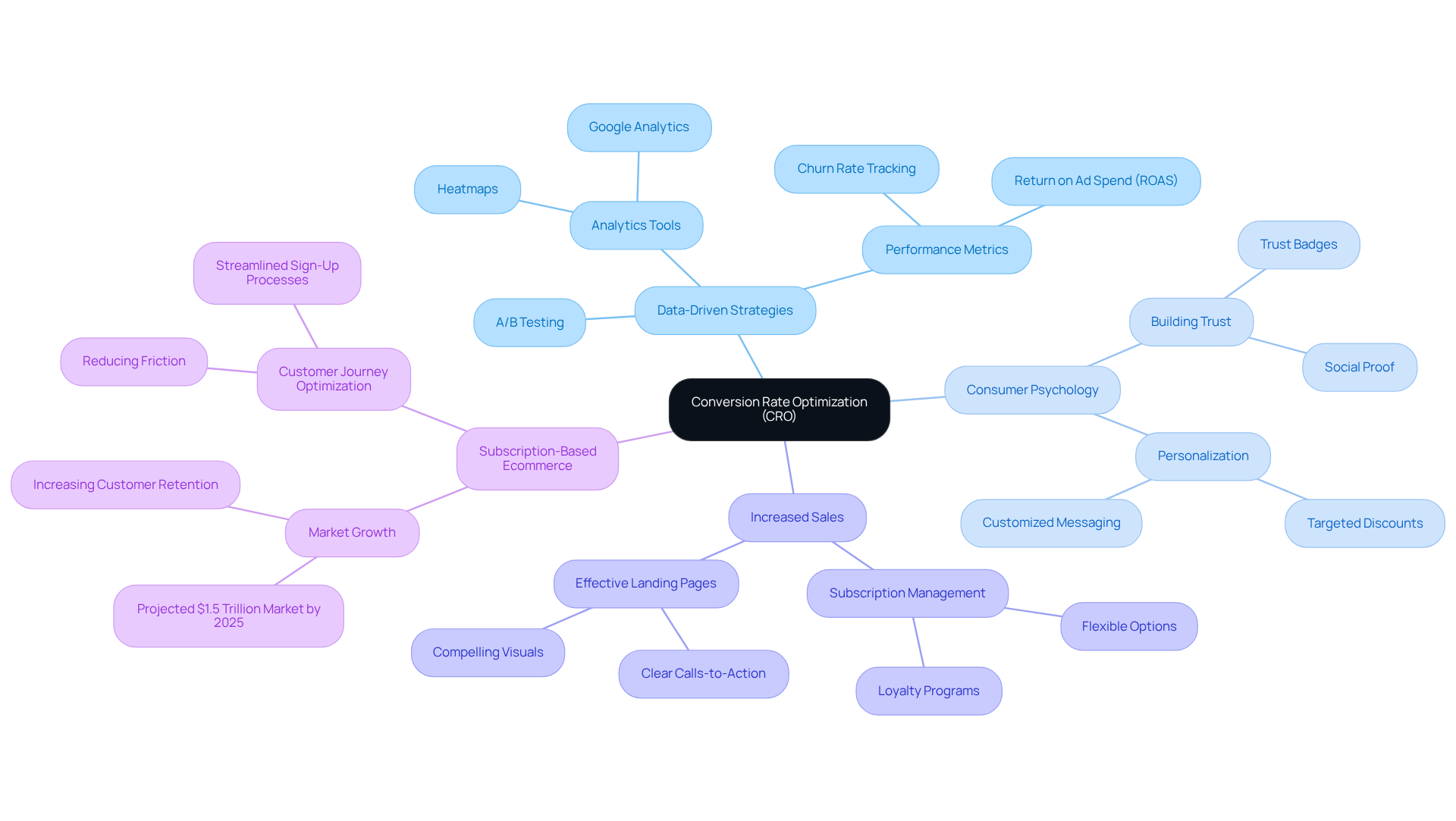
Steady Revenue Stream: Ensure Financial Stability
Subscription-based ecommerce is pivotal in establishing a reliable revenue stream, which is a cornerstone for financial stability. This predictability empowers DTC companies to forecast their revenue with remarkable accuracy, facilitating improved budgeting and informed strategic investments in growth initiatives. With a steady monthly income, brands can allocate resources more efficiently, ensuring operational costs are met while also investing in marketing and product development.
The membership ecommerce sector is projected to exceed $450 billion by 2025, signaling a significant shift towards fostering continuous consumer relationships rather than isolated transactions. This growth underscores the importance of [subscription based ecommerce models](https://councils.forbes.com/blog/the-rise-of-subscription-based-business-models) in securing stable revenue, enabling companies to plan for future expansions and innovations.
Furthermore, businesses that embrace subscription based ecommerce models frequently report impressive revenue growth. Data shows that companies leveraging these models have achieved a 60% growth rate in recent years, significantly outpacing the 10% CAGR of traditional ecommerce. This trend illuminates the evolving landscape of subscription based ecommerce, where ongoing customer value is of paramount importance.
DTC owners have noted the transformative impact of consistent revenue streams, with many emphasizing that reliable income levels provide the essential cash flow necessary for the continuous enhancement of products and services. For instance, a $30M apparel company collaborated with Parah Group to optimize their website strategically, resulting in a 35% increase in conversion rates and a 10% rise in revenue per visitor. Similarly, a $15M cleaning product company experienced an 80% increase in average order value after implementing targeted strategies, demonstrating the effectiveness of Conversion Rate Optimization (CRO) in driving revenue growth.
As one label owner articulated, 'The success of subscription based ecommerce lies in the equilibrium of value it provides both the business and the client.' This observation resonates with the broader consensus that subscription based ecommerce models not only bolster financial stability but also and engagement.
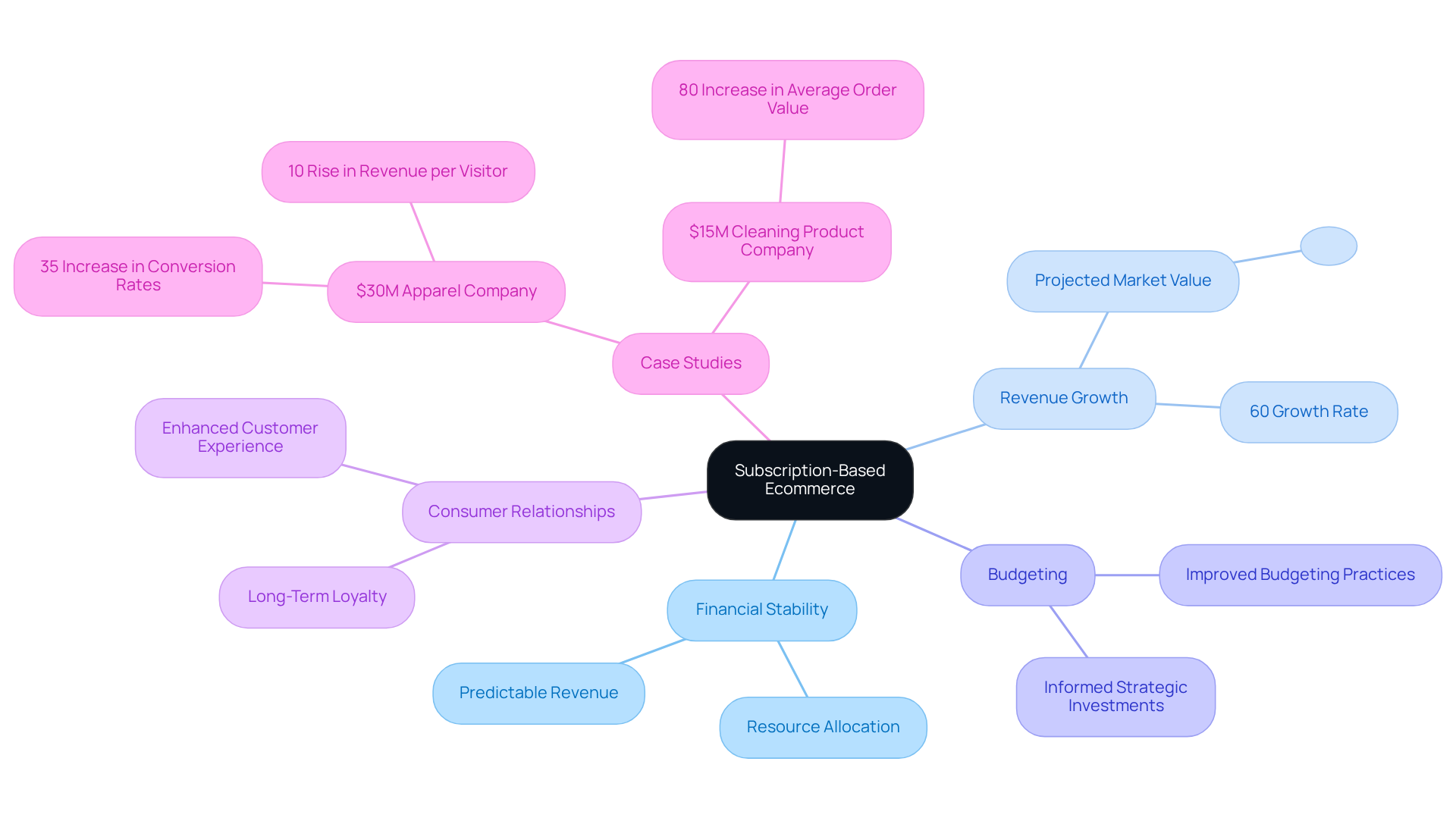
Simplified Inventory Management: Optimize Stock Levels
Subscription models significantly enhance inventory management by enabling companies to forecast demand with greater precision. By examining consumer preferences and purchasing behaviors, DTC brands can adeptly adjust their inventory levels, thereby effectively mitigating the risks associated with overstocking and stockouts. This strategic approach not only minimizes waste but also , ensuring that products are readily available when customers need them.
As membership-based businesses expand, they experience an average order value of $47, reflecting an 11% year-over-year increase, which underscores the financial advantages of optimized inventory practices. Experts in supply chain management, including Jonathan Byrnes, assert that many supply chains are outdated and necessitate modernization to sustain a competitive advantage.
By leveraging subscription based ecommerce models, DTC companies can align their inventory strategies with real-time consumer insights, thus fostering a more flexible and responsive supply chain. For instance, companies like Dollar Shave Club and Stitch Fix have successfully optimized their inventory levels through subscription based ecommerce models, illustrating the practical application of these strategies.
Furthermore, the inventory management software market is projected to reach USD 7.14 billion by 2033, highlighting the increasing importance of efficient inventory management within the context of subscription based ecommerce.
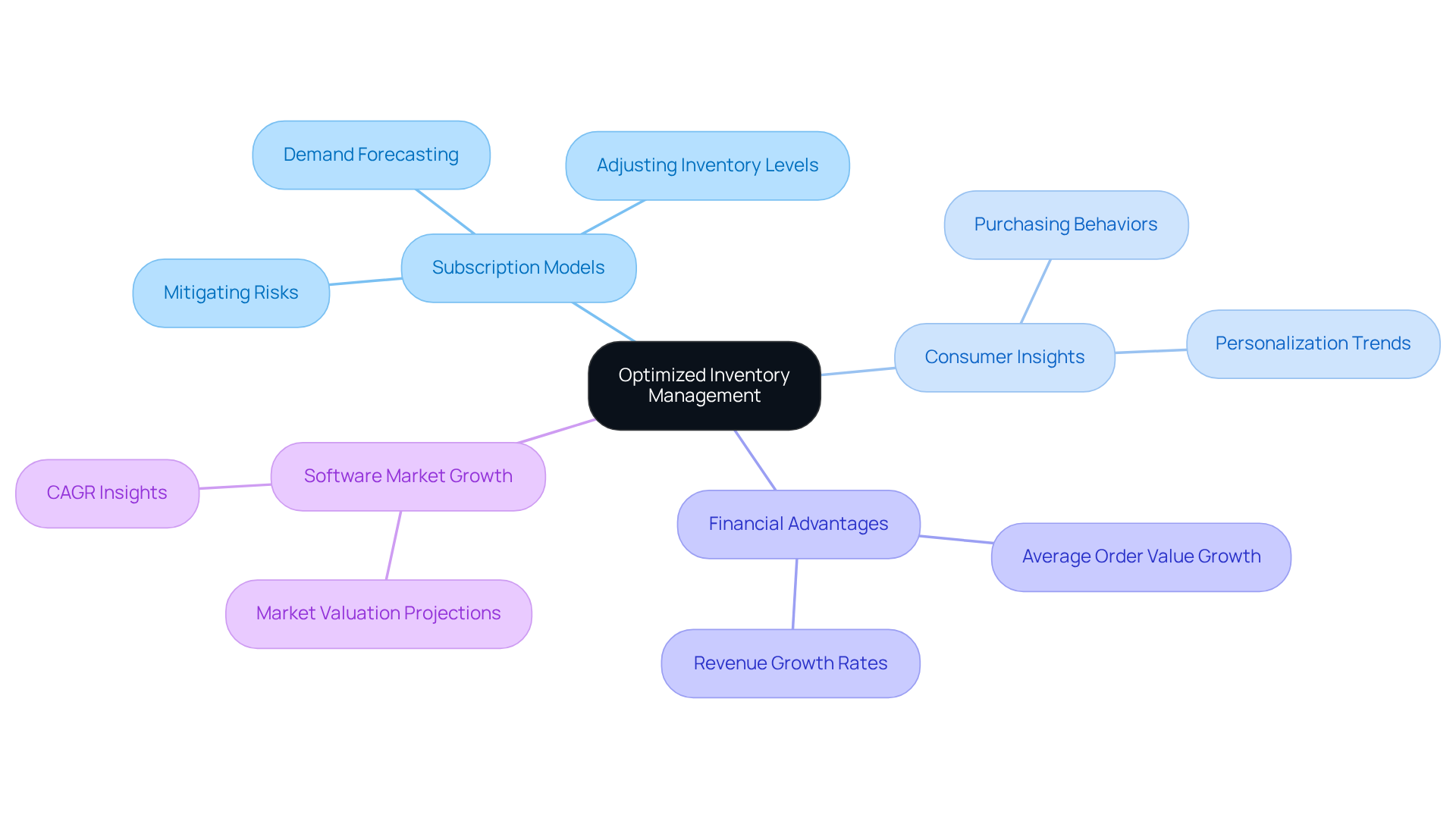
Lower Customer Acquisition Costs: Enhance Marketing Efficiency
Subscription-based ecommerce significantly lowers client acquisition costs by fostering loyalty and encouraging repeat purchases. When clients opt for subscriptions, companies can strategically shift their marketing focus from acquiring new clients to . This approach not only diminishes marketing expenses but also enhances overall profitability, as retaining existing clients is generally more cost-effective than attracting new ones.
Research indicates that companies that effectively implement loyalty programs can witness a substantial increase in repeat purchase rates, with studies showing that referred individuals are up to four times more likely to make further referrals. Furthermore, a healthy client acquisition cost (CAC) should ideally be about one-third of the client lifetime value (CLV), enabling companies to sustain a growth trajectory.
As the ecommerce landscape evolves, emphasizing client retention through subscription based ecommerce models emerges as a vital strategy for improving marketing effectiveness and ensuring long-term success.
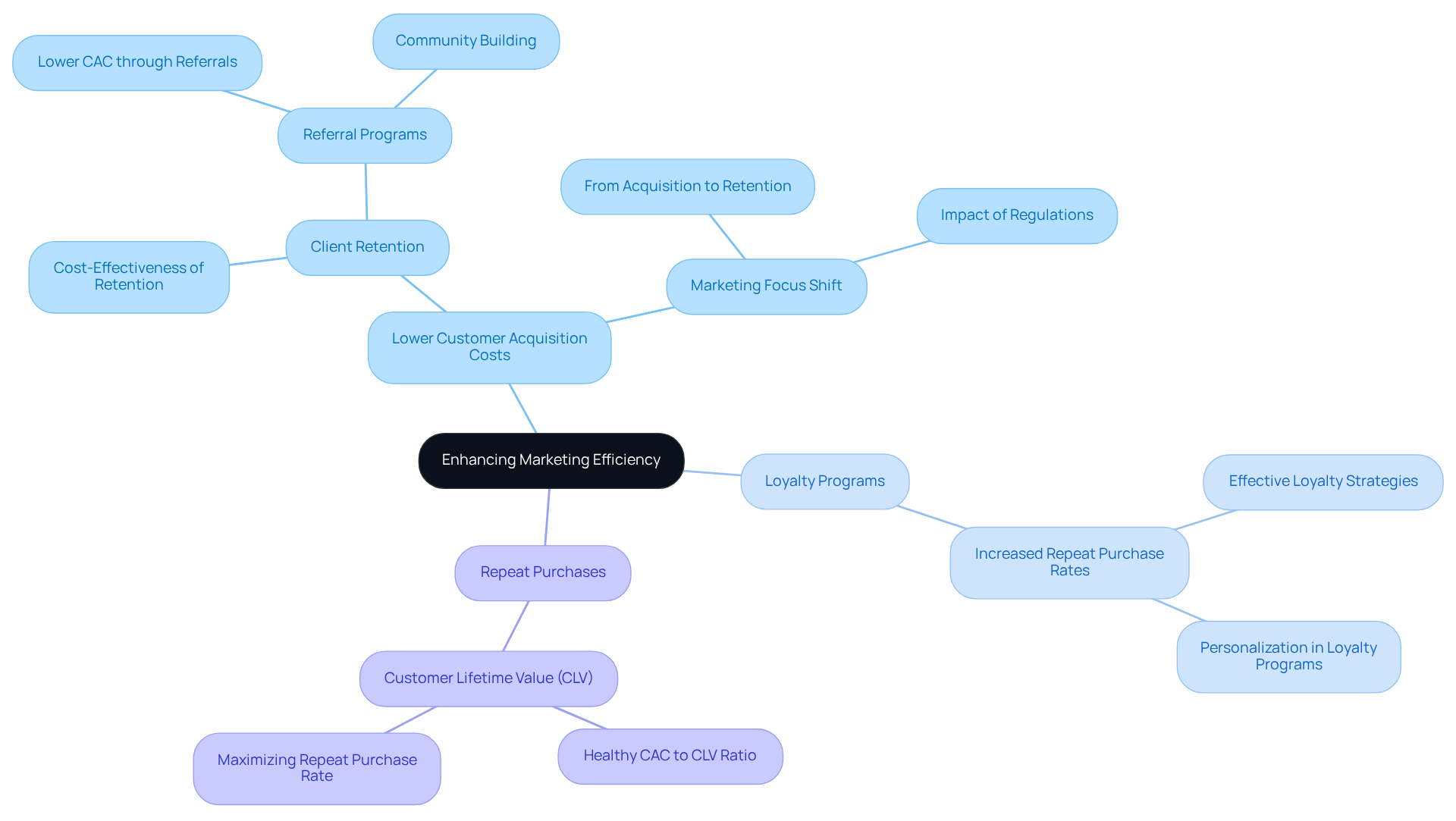
Increased Customer Loyalty: Build Lasting Relationships
Subscription based ecommerce models inherently cultivate increased loyalty among consumers by establishing a commitment between companies and users. When clients opt for a subscription based ecommerce membership, they are more inclined to forge lasting connections with the company, resulting in higher repeat purchases and favorable word-of-mouth recommendations. This loyalty not only propels sales but also significantly in the marketplace.
Notably, companies like MeUndies and Ipsy have effectively leveraged subscription based ecommerce through service plans to cultivate robust relationships with their customers, leading to remarkable sales figures and client retention rates. Recent studies reveal that nearly 80% of Gen Z and Millennials believe subscription services aid them in discovering new products, further solidifying their loyalty to companies that deliver personalized experiences.
As one marketing strategist aptly noted, 'Establishing enduring connections with subscribers necessitates a profound comprehension of their needs and preferences, which can be attained through ongoing interaction and input.' This approach not only enhances client satisfaction but also positions companies advantageously in a competitive landscape, ultimately driving ongoing growth and profitability.
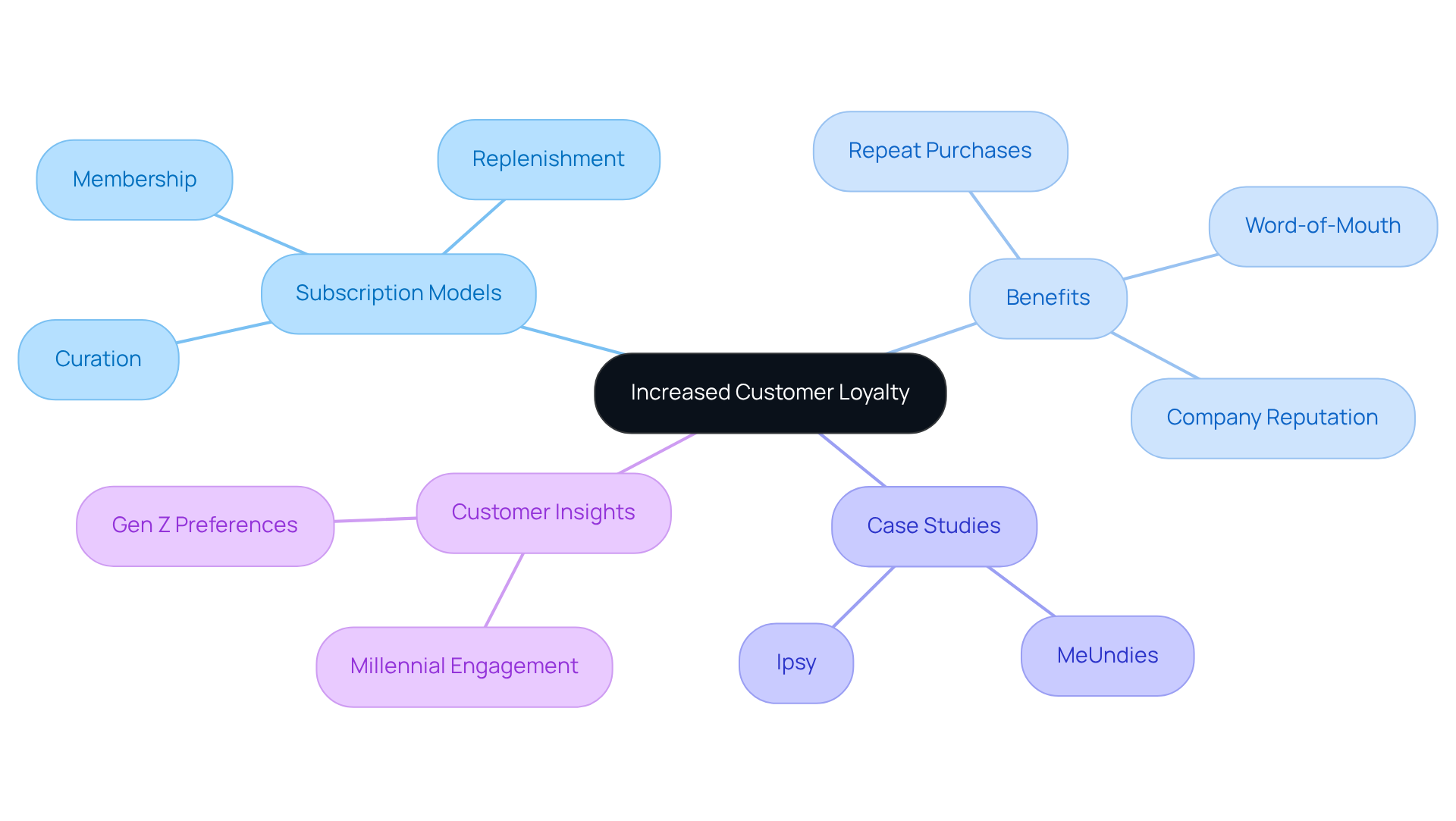
Personalized Customer Experience: Tailor Offerings to Preferences
Subscription-based ecommerce enables companies to provide a highly personalized experience by meticulously tailoring products and services to align with individual preferences. By leveraging consumer data, businesses in subscription based ecommerce can create offerings that resonate with their subscribers, significantly boosting satisfaction and engagement. This tailored approach not only cultivates customer loyalty but also drives conversion rates; research reveals that 71% of consumers are more likely to shop regularly with brands that offer .
For instance, Parah Group has adeptly transformed direct-to-consumer (DTC) labels through innovative conversion rate optimization strategies. A $30 million apparel company witnessed a remarkable 35% increase in conversion rates following the launch of a redesigned homepage that prioritized social proof and refined product pricing. Similarly, Grab Green, a $15 million cleaning product company, enhanced their average order value by 80% through strategic bundling, multi-packs, and price testing.
These case studies exemplify how personalization strategies can lead to heightened loyalty and satisfaction among clients. Furthermore, companies like Free Your Tea and The Otaku Box illustrate the diverse ways organizations implement personalization techniques to cater to their audiences' needs. Additionally, dynamic pricing strategies optimize revenue potential by addressing individual client requirements, fostering deeper connections while enhancing perceived value. As personalization becomes an expected norm, DTC companies that adeptly customize their offerings can anticipate substantial improvements in both client loyalty and overall sales performance.
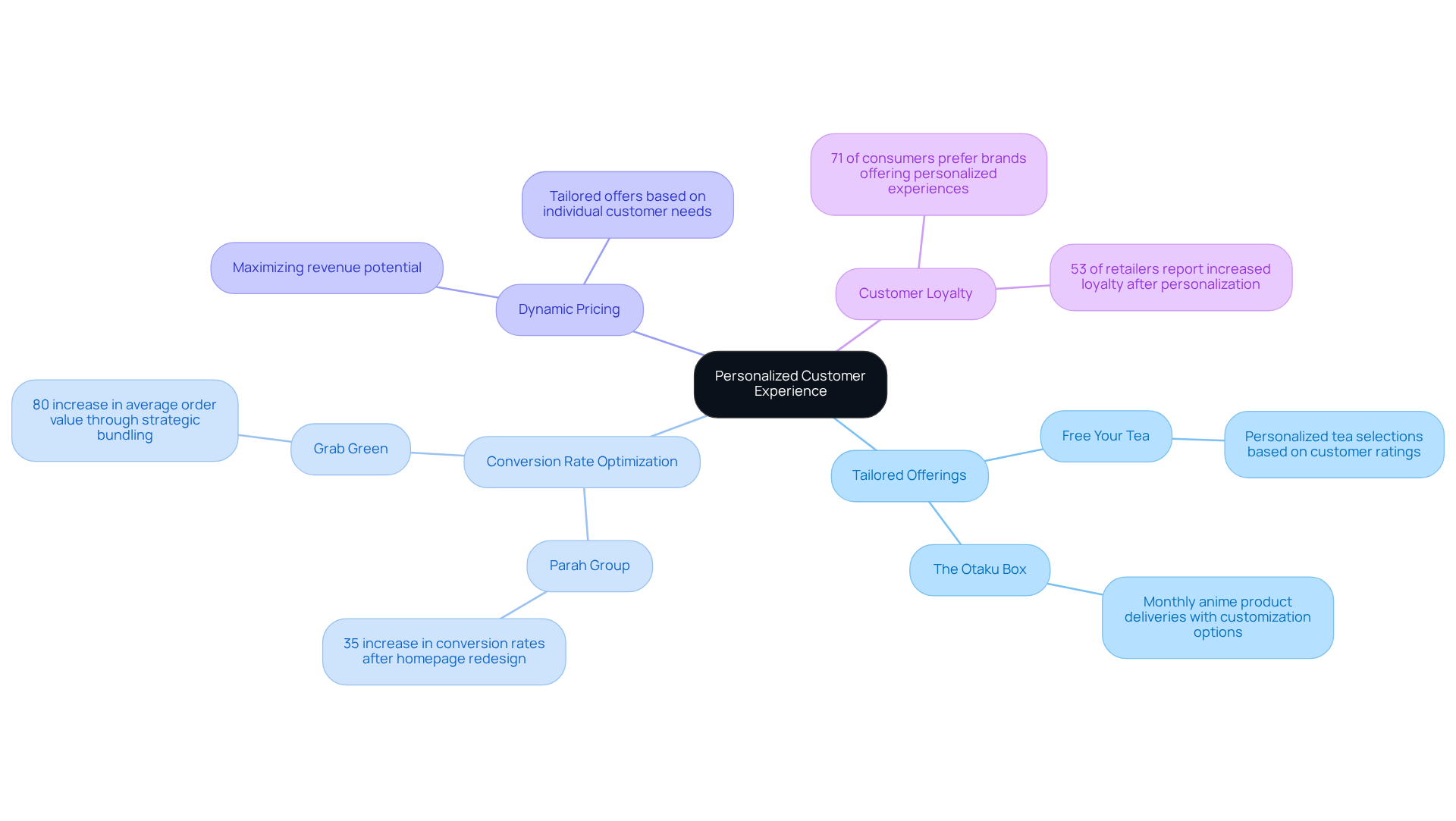
Higher Average Order Values: Maximize Sales Potential
Subscription models serve as a formidable strategy for enhancing average order values (AOV), compelling customers to engage in more frequent and substantial purchases. Direct-to-consumer (DTC) companies can leverage techniques such as product bundling and exclusive discounts for subscribers. These strategies not only incentivize larger order volumes but also contribute significantly to overall revenue growth.
For instance, businesses implementing effective bundling strategies can witness AOV increases ranging from 10% to 30%. A recent case study involving a $30 million apparel company, in partnership with Parah Group, illustrates this point vividly: they achieved a remarkable 35% increase in conversion rates and a 10% uplift in revenue per visitor through optimized pricing and gamified shopping experiences, including a redesigned homepage that showcased social proof. This approach not only enhances by delivering perceived value but also fosters loyalty, as customers appreciate the convenience of receiving curated products.
Similarly, another case involving a cleaning product revealed an astounding 80% increase in AOV through the introduction of bundles and multi-packs, further underscoring the effectiveness of tailored offerings. The success of these strategies hinges on a deep understanding of consumer behavior and preferences, allowing companies to customize their offerings adeptly. By focusing on bundling and subscription based ecommerce incentives, DTC companies can unlock their sales potential and drive sustainable growth.
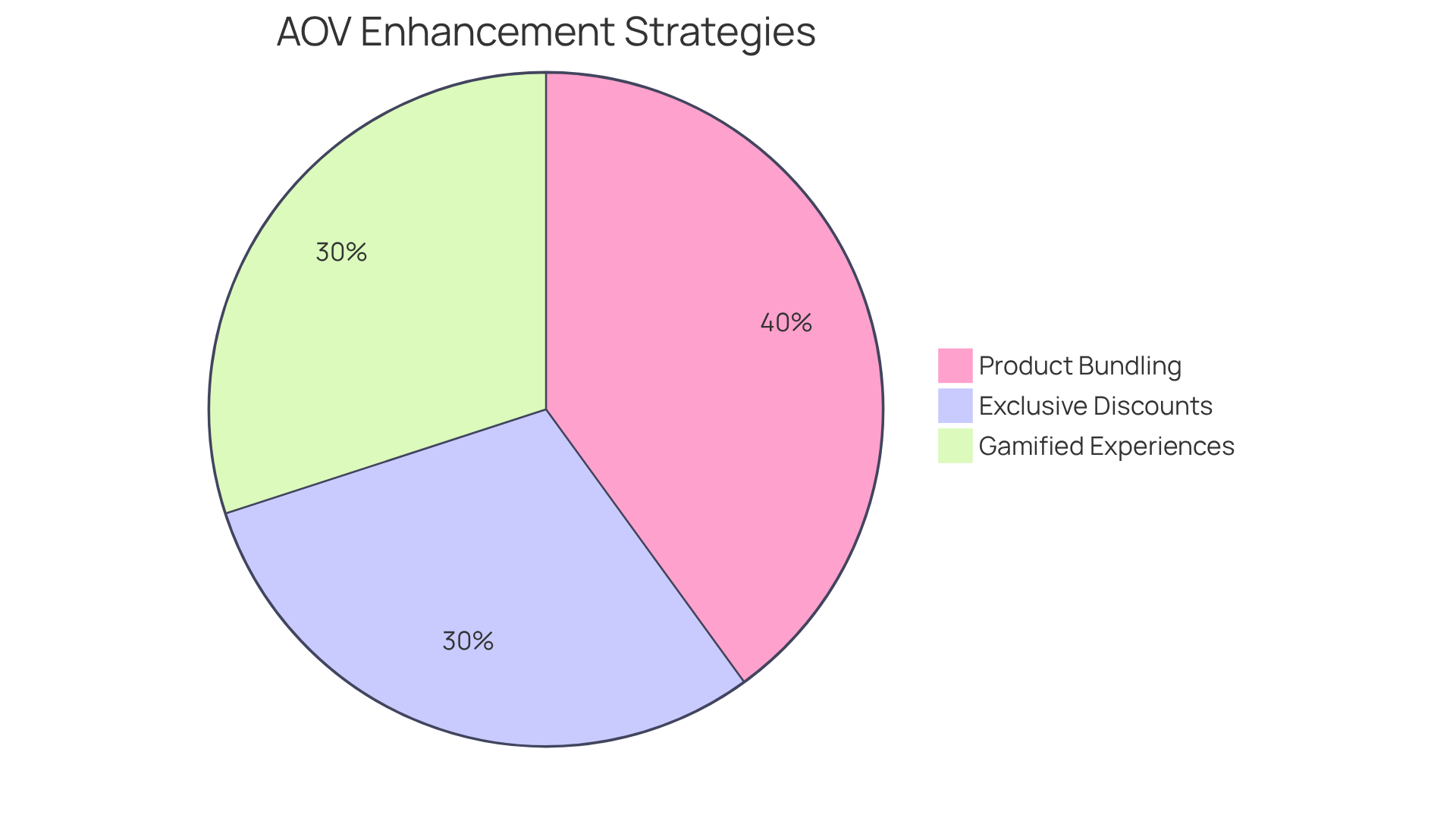
Reduced Churn Rates: Maintain a Stable Customer Base
Subscription based ecommerce significantly reduces churn rates by fostering a sense of community and belonging among clients. By delivering continuous value through exclusive content, products, or services, companies enhance subscriber engagement and satisfaction within their subscription based ecommerce platforms. This heightened engagement not only but also creates opportunities for upselling and cross-selling, thereby amplifying revenue potential.
For instance, companies that implement loyalty initiatives and gamification techniques often witness a 20% to 30% improvement in client retention rates. Moreover, cultivating community through social media interactions and tailored communication yields a more engaging experience for clients, making subscribers feel valued and connected.
Data indicates that effective client engagement strategies, such as regular feedback loops and personalized offers, can significantly lower churn, with some companies achieving monthly churn rates as low as 2%. By prioritizing community involvement, DTC companies can maintain a stable customer base and promote sustainable growth.
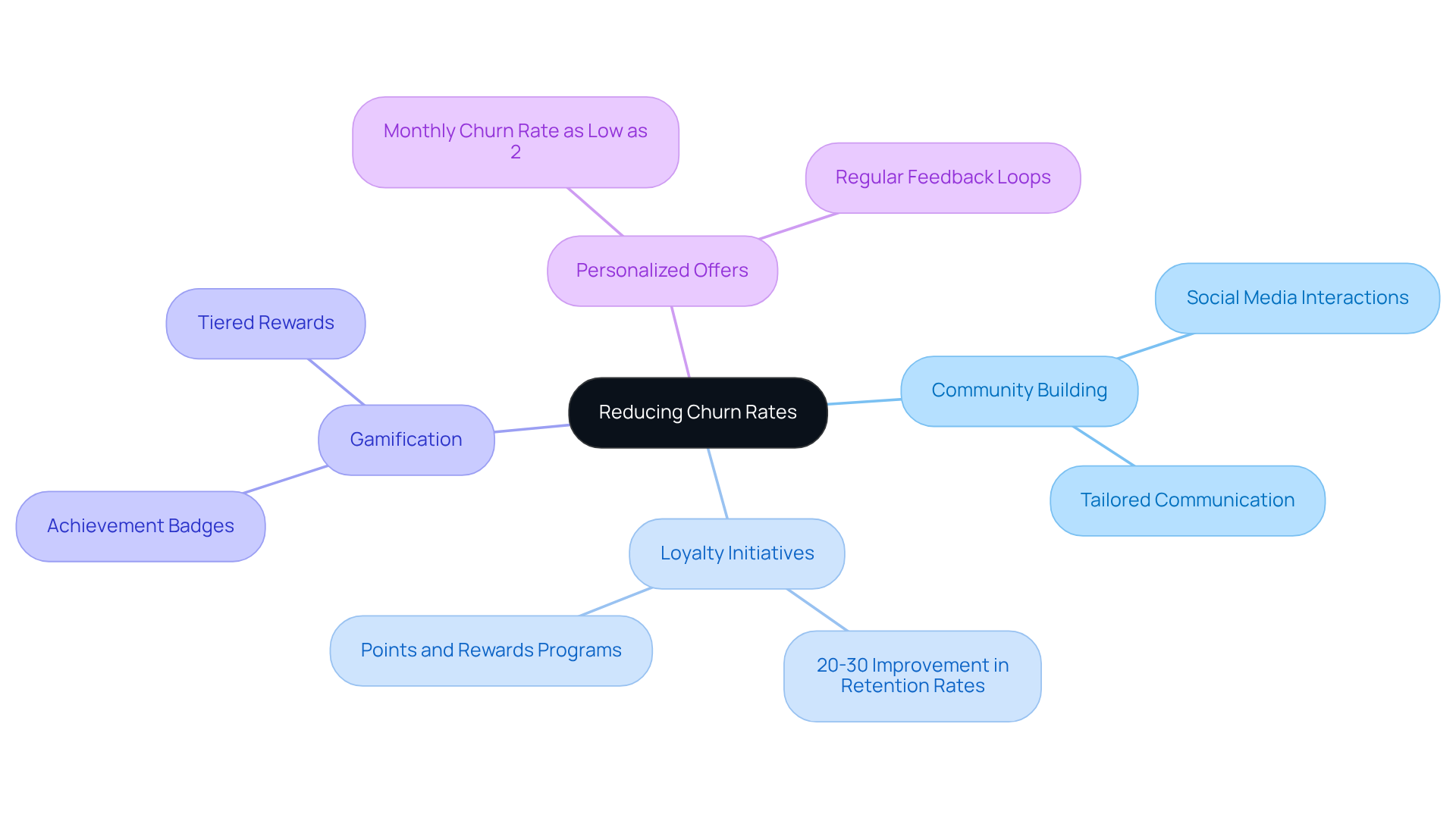
Predictable Revenue: Improve Financial Forecasting
A significant advantage of subscription based ecommerce lies in the predictability of revenue it offers. This consistent influx of membership fees markedly enhances , empowering companies to make informed decisions regarding budgeting and resource allocation. Consequently, DTC companies can engage in more effective strategic planning, facilitating targeted investments that propel growth. The stability afforded by subscription based ecommerce models not only supports operational scaling but also fosters long-term sustainability, enabling companies to navigate market fluctuations with increased confidence. Financial analysts underscore that predictable income is crucial for DTC companies, as it allows for more accurate revenue projections, ultimately culminating in improved financial stability and strategic flexibility.
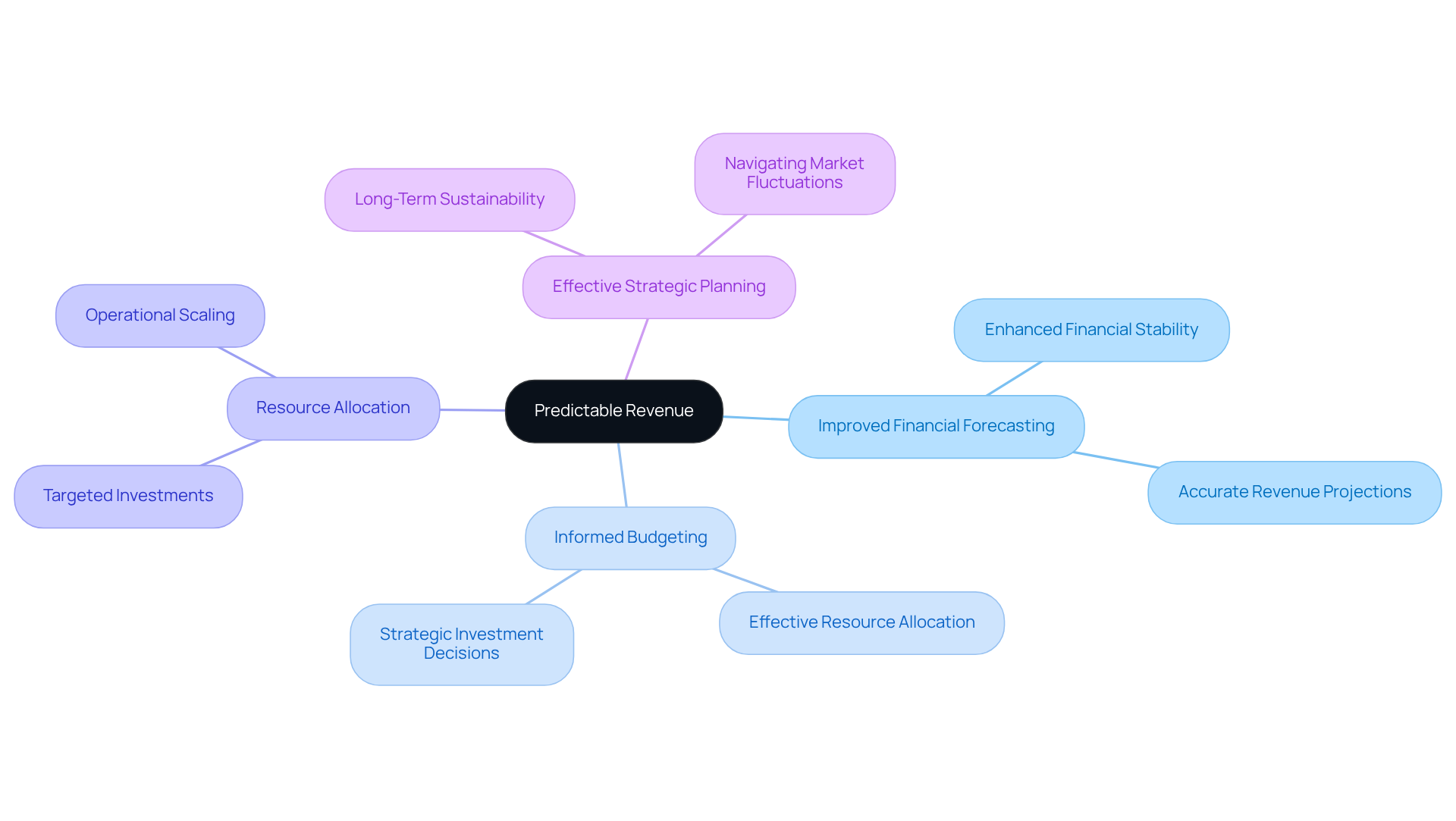
Enhanced Brand Visibility: Leverage Community Engagement
Subscription models can significantly enhance product visibility by fostering community engagement among subscribers. Direct-to-consumer (DTC) companies can leverage social media, forums, and exclusive events to cultivate a sense of belonging and connection. This engagement not only enhances product awareness but also motivates customers to support the company, resulting in greater customer acquisition and retention.
Studies indicate that 40% of consumers exhibit heightened loyalty to brands after participating in promotional activities or experiences, underscoring the impact of community involvement methods on loyalty growth. Moreover, as illustrated by Parah Group's case studies, implementing strategic conversion rate optimization (CRO) techniques can amplify these community efforts.
For instance, a $30 million clothing label experienced a 35% increase in conversion rates after enhancing their homepage to highlight social proof and reviews, while another label raised their average order value by 80% through targeted upselling techniques. By integrating community involvement with effective CRO strategies, DTC companies can fortify their market position and promote sustainable growth.
As Kinjal Shah, a copywriter, notes, "Her method actively enables businesses to connect genuinely with their audiences, enhancing conversions and nurturing long-term customer relationships."
To maximize these benefits, DTC brands should consider implementing regular or initiatives that encourage interaction and feedback from their subscribers within a subscription based ecommerce framework, while also incorporating CRO practices to enhance profitability.
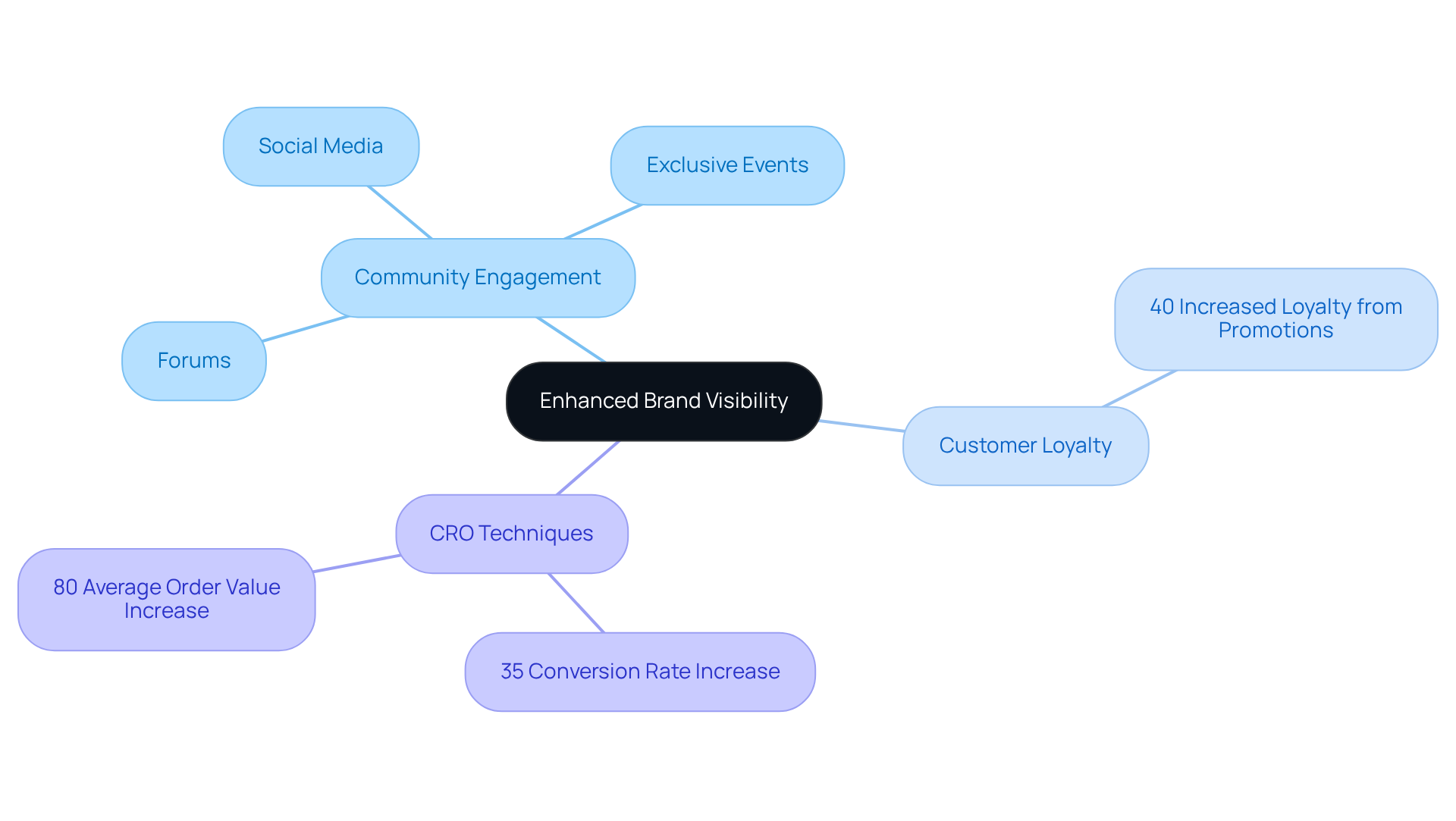
Conclusion
Subscription-based ecommerce represents a transformative strategy for direct-to-consumer (DTC) brands, shifting the focus from one-time transactions to cultivating enduring customer relationships. This model not only boosts profitability but also fosters brand loyalty and engagement, equipping companies to thrive in an increasingly competitive marketplace.
The article has thoroughly examined the myriad benefits of subscription-based ecommerce. Among the key advantages are:
- A consistent revenue stream that enhances financial stability
- Improved inventory management that reduces waste
- Lower customer acquisition costs that increase marketing efficiency
Furthermore, the emphasis on personalized customer experiences and strategies for elevating average order values underscores the potential for sustainable growth inherent in this model. The reduction of churn rates through community engagement further bolsters the argument for adopting subscription models, as they cultivate a loyal customer base deeply invested in the brand.
In conclusion, adopting subscription-based ecommerce is not merely a trend; it signifies a strategic shift that can yield substantial benefits for DTC brands. As the landscape continues to evolve, companies are urged to harness these insights and implement subscription models that prioritize customer relationships, optimize operational efficiency, and drive revenue growth. By doing so, brands can strategically position themselves for long-term success in a rapidly changing market.
Frequently Asked Questions
What is Conversion Rate Optimization (CRO) and why is it important for DTC companies?
Conversion Rate Optimization (CRO) involves using data-driven strategies and consumer psychology principles to enhance conversion rates for Direct-to-Consumer (DTC) companies. It is crucial for boosting profitability as it leads to increased sales without the need for additional advertising expenditures.
How does subscription-based ecommerce contribute to financial stability?
Subscription-based ecommerce provides a reliable revenue stream, allowing DTC companies to forecast revenue accurately. This predictability aids in improved budgeting and strategic investments, ensuring operational costs are met while enabling marketing and product development.
What is the projected growth of the membership ecommerce sector?
The membership ecommerce sector is projected to exceed $450 billion by 2025, indicating a shift towards fostering continuous consumer relationships rather than isolated transactions.
How does subscription-based ecommerce impact revenue growth for companies?
Companies utilizing subscription-based ecommerce models have reported significant revenue growth, with data showing a 60% growth rate in recent years, which outpaces the 10% CAGR of traditional ecommerce.
Can you provide examples of companies that benefited from Conversion Rate Optimization?
Yes, a $30M apparel company collaborated with Parah Group to optimize their website, resulting in a 35% increase in conversion rates and a 10% rise in revenue per visitor. Additionally, a $15M cleaning product company saw an 80% increase in average order value after implementing targeted strategies.
How does subscription-based ecommerce enhance inventory management?
Subscription models improve inventory management by allowing companies to forecast demand more accurately. This helps DTC brands adjust inventory levels based on consumer preferences, reducing risks of overstocking and stockouts, which enhances customer satisfaction.
What is the average order value for membership-based businesses?
Membership-based businesses experience an average order value of $47, reflecting an 11% year-over-year increase, highlighting the financial advantages of optimized inventory practices.
What is the projected market value for inventory management software?
The inventory management software market is projected to reach USD 7.14 billion by 2033, indicating the growing importance of efficient inventory management in the context of subscription-based ecommerce.
FAQs











